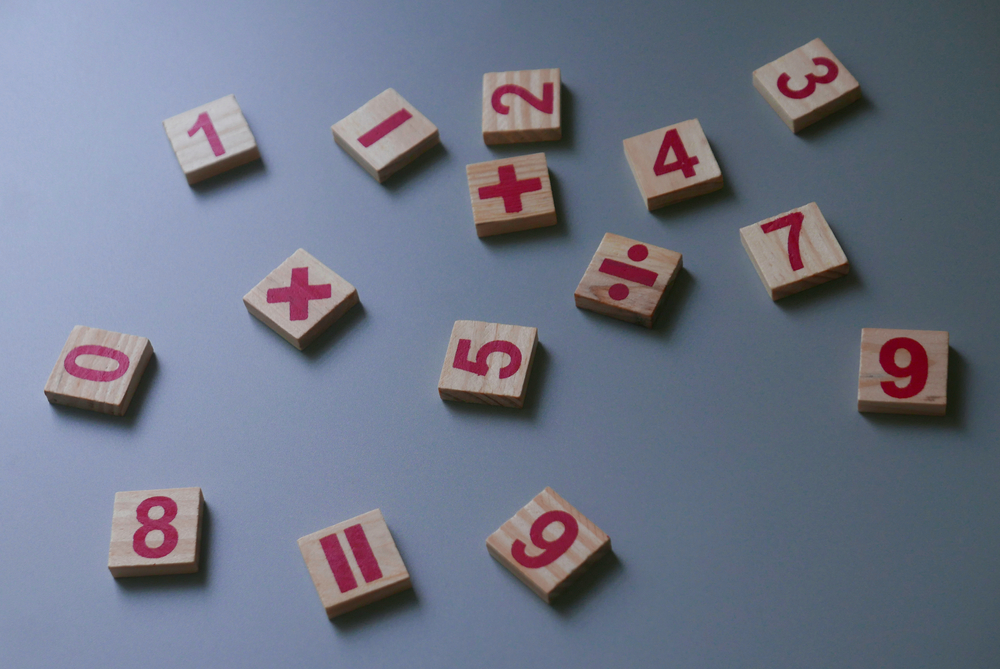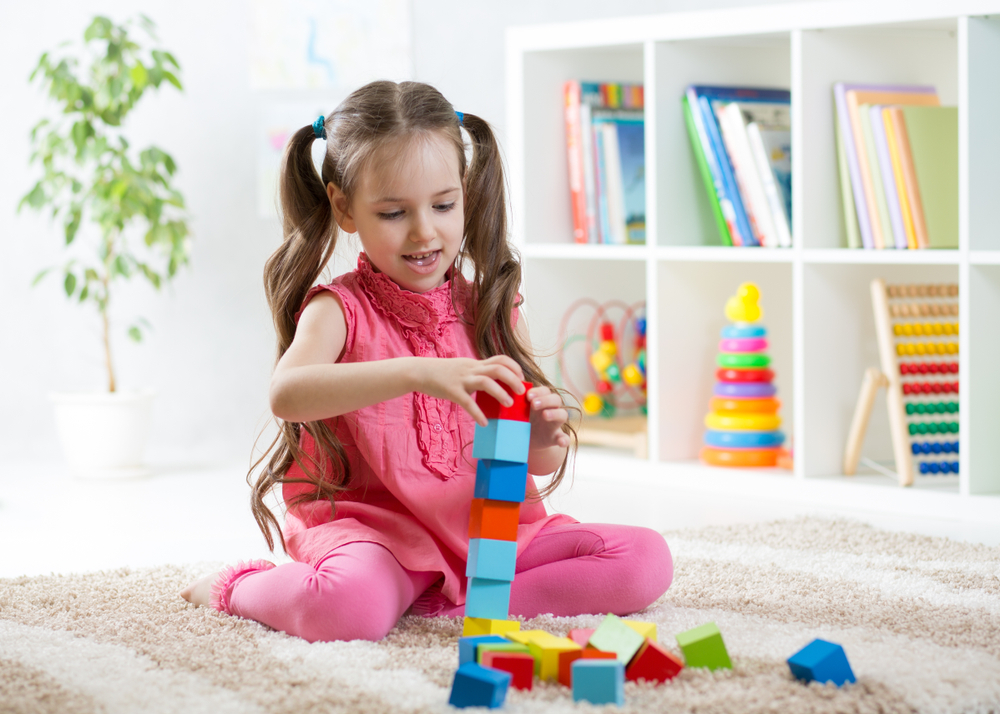Normal Tracing Shapes Worksheets Activities With Answers for Ages 3-9
9 filtered results
-
From - To
Explore our engaging Normal Tracing Shapes Worksheets, specially designed for children aged 3-9! These fun activities help young learners develop essential fine motor skills while recognizing various shapes. Our worksheets are filled with vibrant illustrations and easy-to-follow tracing exercises that motivate kids to practice and enhance their writing abilities. Each activity comes with comprehensive answers, ensuring that both parents and educators can provide the necessary support. Perfect for home learning or classroom use, these worksheets encourage creativity and boost confidence in early learners. Download and print today to give your child a head start in shape recognition and motor development!
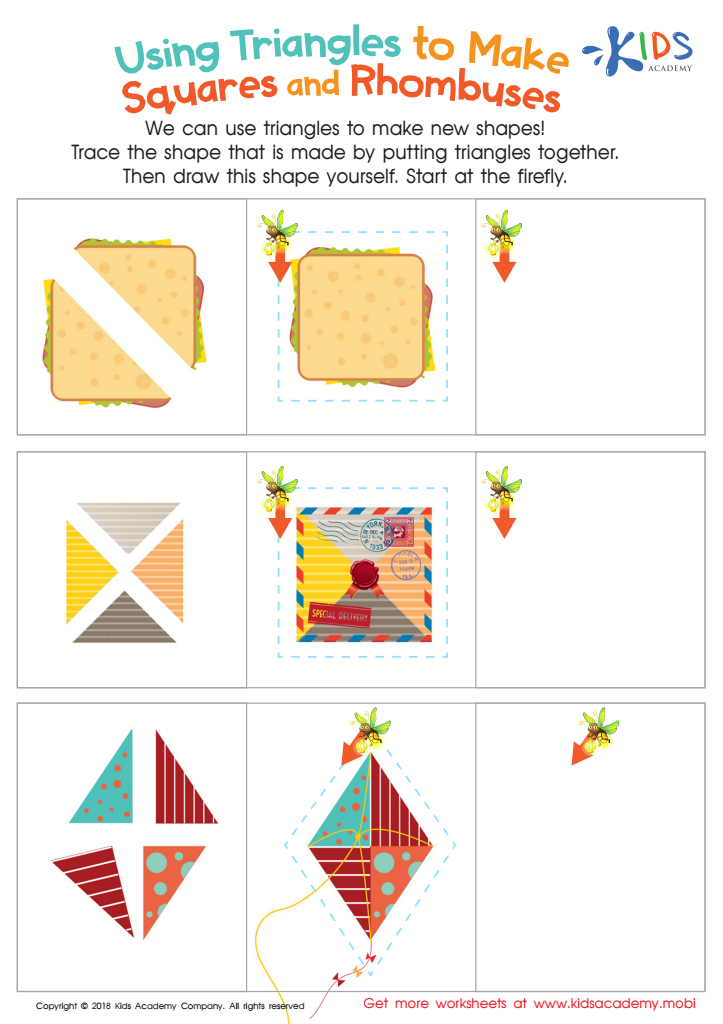

Using Triangles to Make Squares and Rhombuses Worksheet
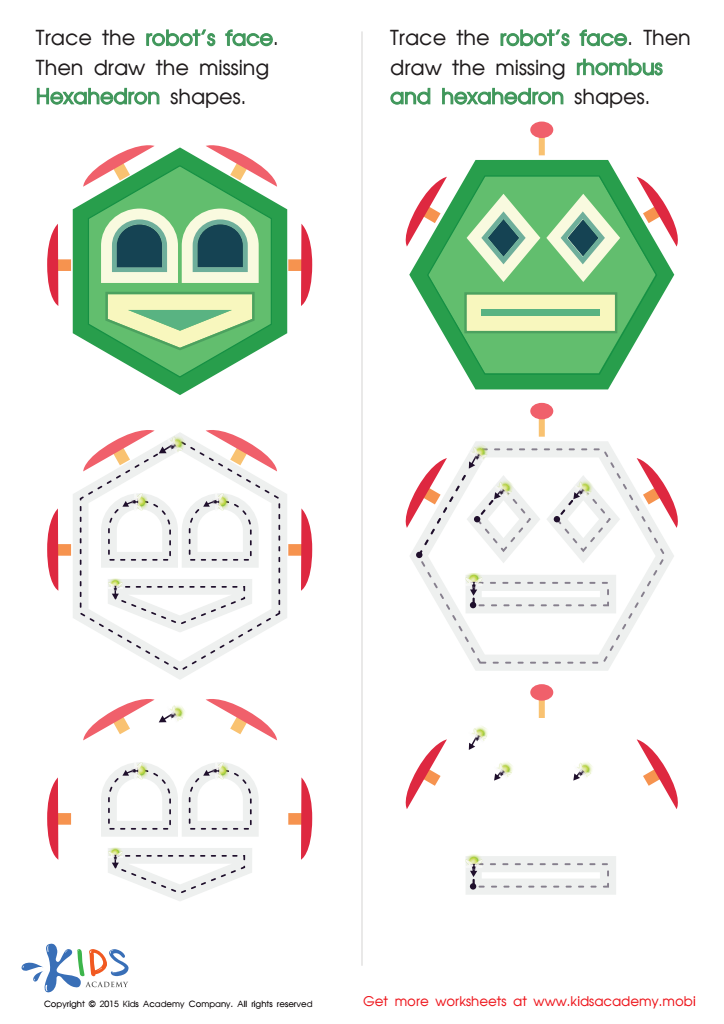

Practice Drawing Hexahedrons And a Rhombus Worksheet


Drawing a Triangle Worksheet
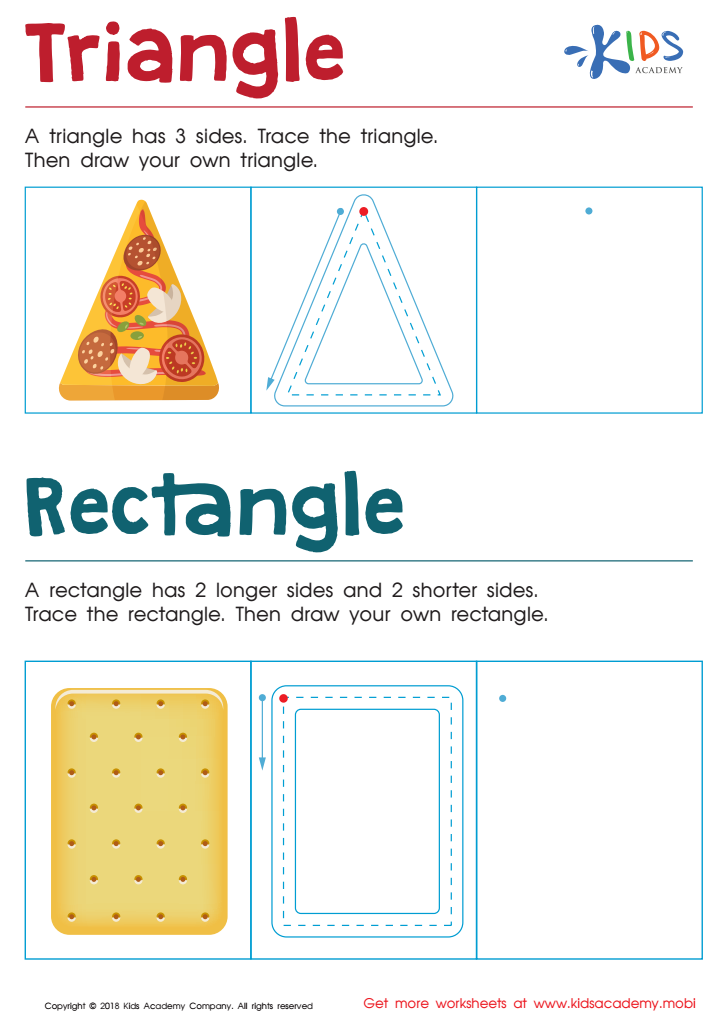

Triangle Rectangle Worksheet
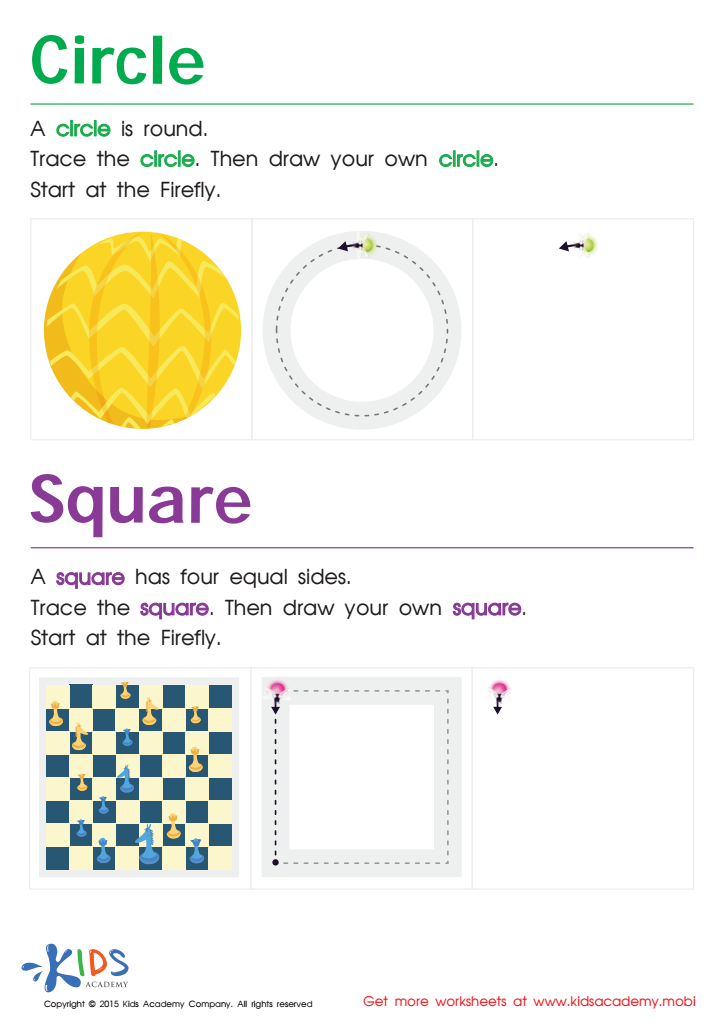

Trace And Draw a Circle And a Square Worksheet
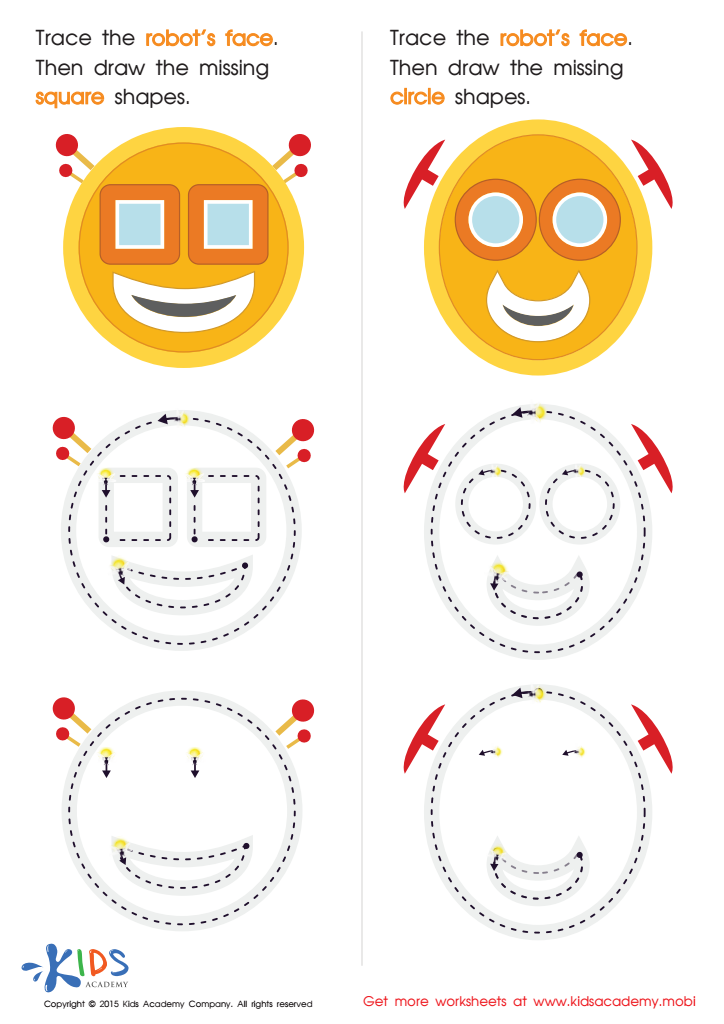

Practicing to Draw Circles And Squares Printable
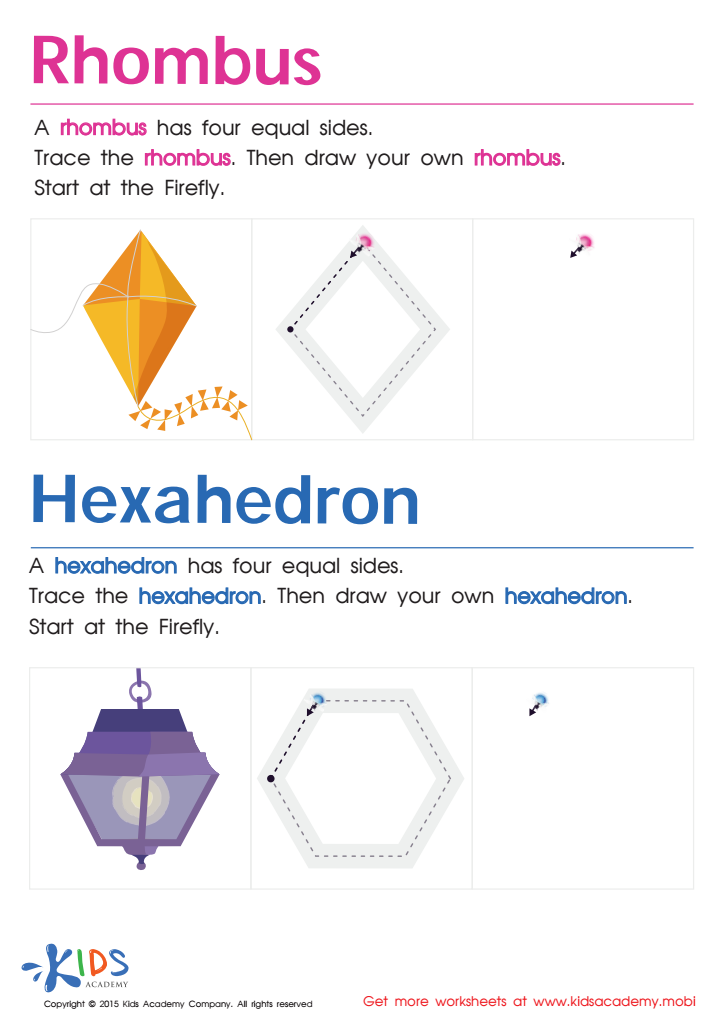

Draw a Rhombus And a Hexahedron Printable
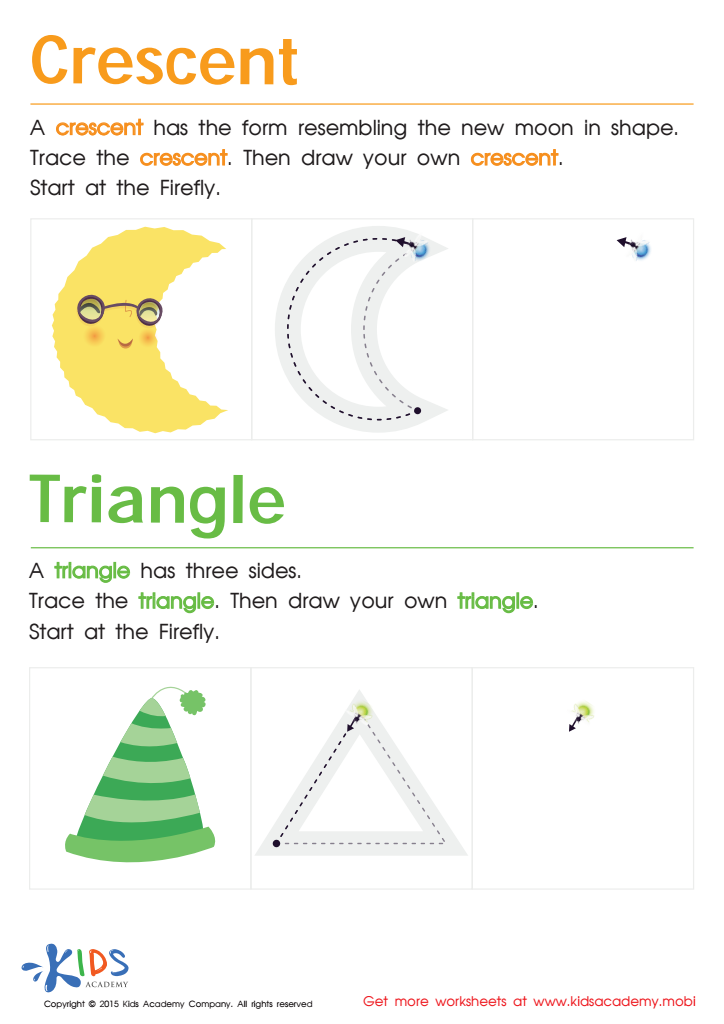

Learning to Draw Crescents And Triangles Worksheet
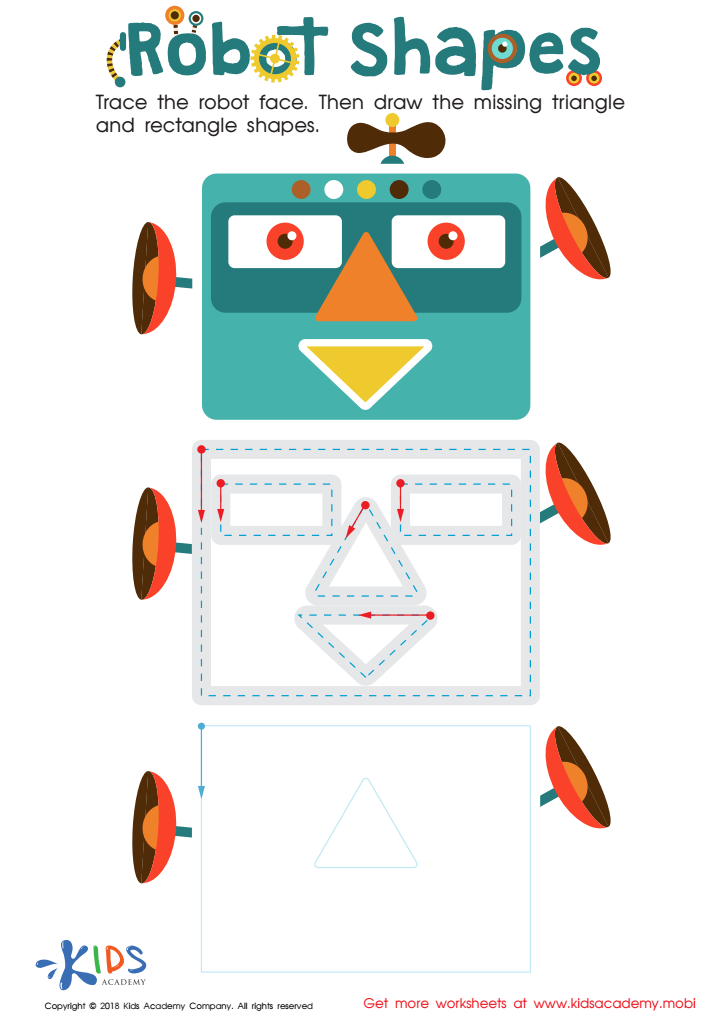

Robot Shapes Worksheet
Normal tracing shapes activities are vital for children aged 3-9 as they lay the foundation for essential skills in early childhood development. Engaging in tracing shapes helps young learners enhance their fine motor skills, crucial for later tasks like writing, buttoning shirts, and using utensils. Through repetition, children develop hand-eye coordination and improve their grip on writing tools, vital for academic success.
Moreover, these activities foster cognitive development by introducing geometric shapes, aiding in shape recognition and spatial awareness. By practicing tracing, children learn to distinguish between different forms, which is fundamental in math and geometry later on.
Parents and teachers should also appreciate that these activities offer a platform for creativity and exploration. Whether it's tracing stars, circles, or triangles, kids can create a variety of art projects, enhancing their imagination. Clear answers or examples provided with tracing activities can guide adults in assessing children’s understanding, allowing for tailored support.
Furthermore, engaging in tracing shapes provides a sense of achievement, boosting children's confidence. Overall, tracing shapes combines skill development, learning, and fun, making it an essential component of early childhood education. Investing time in these activities promotes a holistic approach to a child's learning journey.

 Assign to My Students
Assign to My Students


